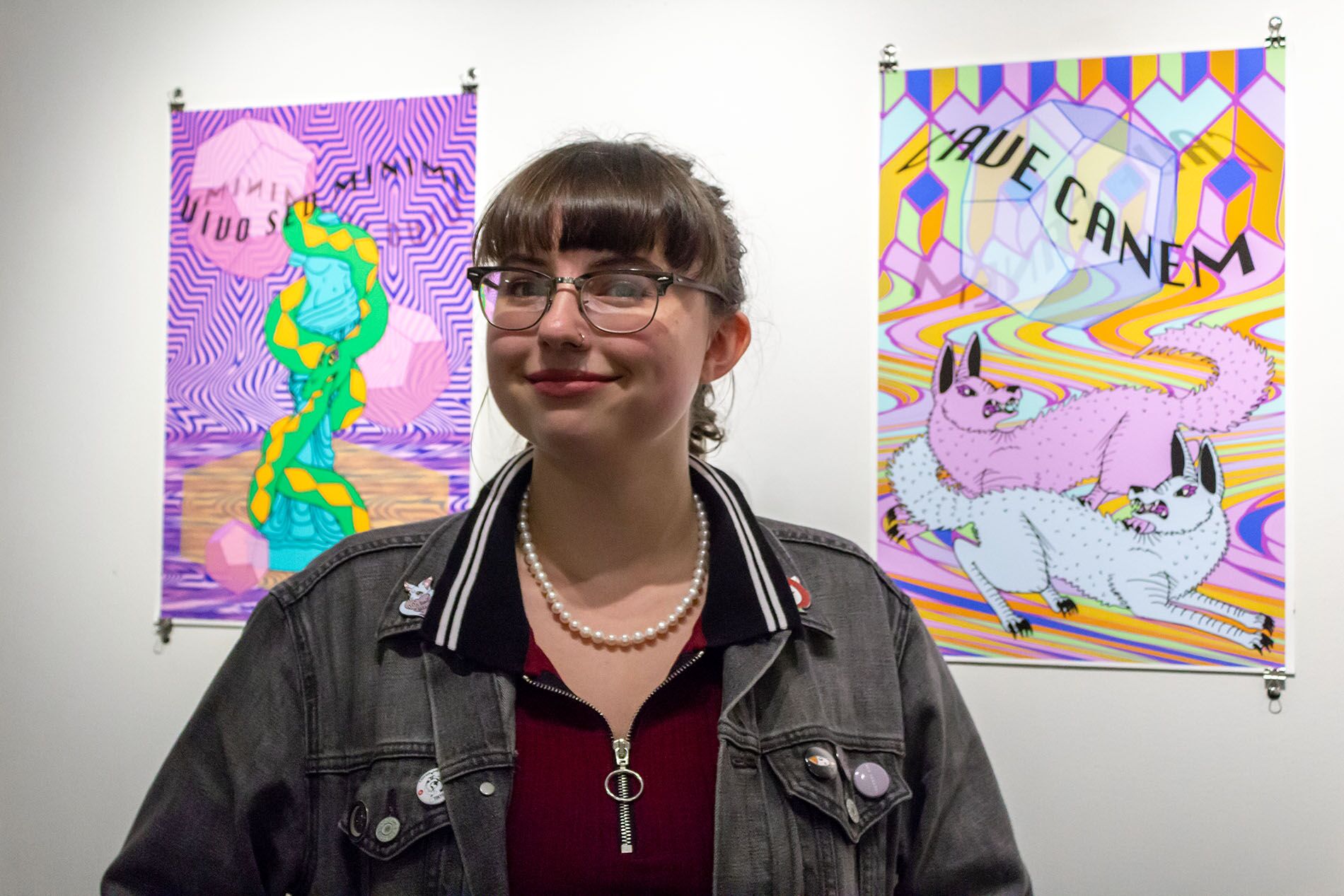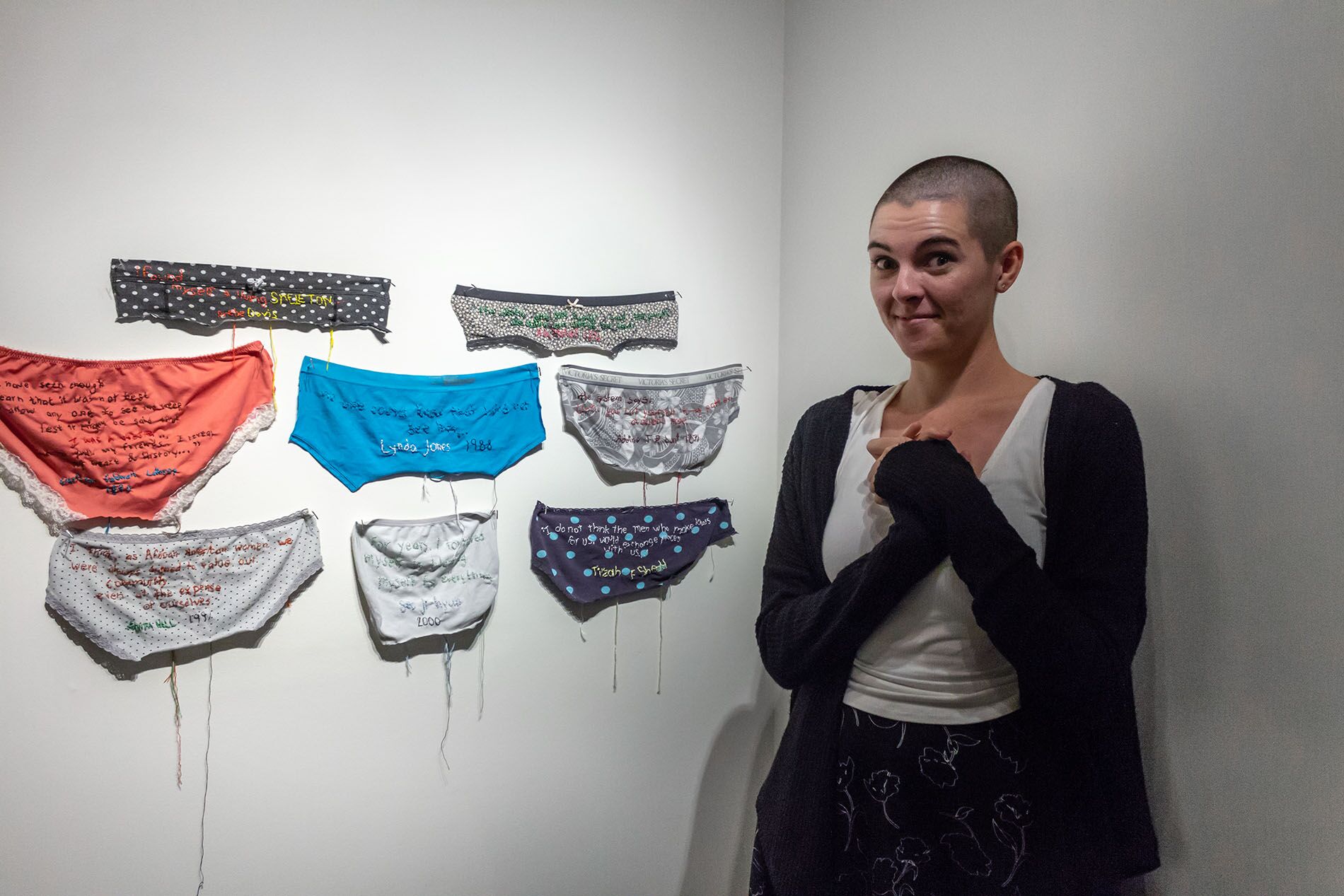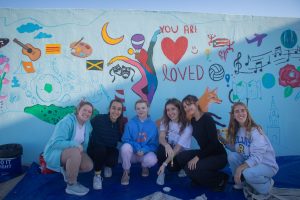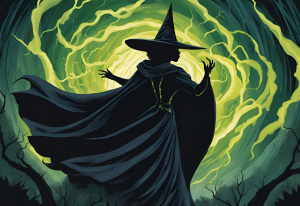
Six studio art seniors presented a multimedia exhibition that, while diverse, addressed marginalized elements of society and culture.
The exhibition, titled Et Cetera, took place in a wing of the Cornell Fine Arts Museum that was filled with peers and professors enjoying each piece. The students will use comments gathered from the show to prepare for their final exhibition at Rollins in April 2019.
Alicia “Friday” Sales (‘19) gained her subject material from her research of Ancient Rome, Ancient Greece, and the medieval practice of alchemy. Sales said she is interested in the classical style because of its philosophical roots and because it allows her to take old concepts and make them unique.
“I like acknowledging that nothing is ever truly original, but yet we can make it our own,” she explained.
On display were three prints of digital art that mix classically-styled images of figures, such as Venus and ouroborus, with bright colors inspired by the 2000’s vaporwave and 1960’s psychedelic movements.
Distorted patterns in the background paired with transparent geometric patterns created a dizzying effect on the viewer and an illusion of depth. There was a trend of pentagonal shapes, which was possibly the artist’s nod to the number five as a symbol for human life.

Ari Schubot (‘19) is an environmental studies and studio art double major. In her work, she focused mainly on the perseverance of nature in a man-made world.
“I like to focus on the little life coming through all the cracks where it shouldn’t be able to grow,” she said.
Her photography sprouted from the bottom of the wall, expanding and spreading upwards in a vine-like manner, connecting through lines or shadows. The photographs were primarily in grayscale with heavily saturated greenery sprouting in unlikely urban areas.
Next to the display was a small table with cartoon thought-bubble stickers and markers. Viewers of the exhibit could write internal dialogue for the plants and place the sticker onto a photograph.
The sayings written by viewers will be printed onto new stickers and placed beside unlikely plant life for what will become a public art project on Park Avenue.
Schubot hoped that people who attended the exhibition and contributed to the artwork will be able to appreciate the inclusion of their commentary in the final show in April.
At first glance, the art of Elizabeth Shugart (‘19) appeared to be nothing more than a screenshot of the satellite view of Google Maps. However, upon closer inspection, the viewer began to see the complexities of a false color digital collage of archival, satellite, and personal photography. Her interest was in human manipulation of the Everglades and how the landscape has been exploited.
“I have always been interested in how the economy takes precedence over the environment and natural systems,” she said. Shugart originally planned to focus on oil drilling in Big Cypress National Preserve, but she discovered the much larger underlying issue of the disruption of Florida ecosystems, especially those in and around the Everglades.
The aesthetic approach to the topic was inspired by an airplane view, because the control of the land by humans is more evident from above. She used supersaturated false color to mimic figures used in the sciences to represent ecological data. She also took inspiration from the work of Maya Lin and wanted to use her art to encourage viewers to alter their behaviors to preserve natural landscapes.

Zinnia Upson (‘19) learned about Colony Collapse Disorder before she arrived at Rollins. This is a phenomenon in which a colony of bees abandons its hive. An oversized pair of paper bee wings are the first thing one saw when they entered Upson’s gallery space. She used the massive wings to represent the huge nature of the problem.
On the adjacent wall, beneath save-the-bees inking of what Upson calls “a call to action in puns,” stood a small table littered with vials of seeds. Inside, thick, honey-like liquid seemed to float.
“One-third of our produce is pollinated by the bees, so if bees go extinct, a large part of our diet goes with them,” she said. She used the vials as a foreshadowing of how post-bee generations will have to learn about what the world was like in a time when bees existed.
Anastasia Rooke (‘19) created a commentary on the fast fashion industry and the compromise of human safety for Western comfort. A digital art video featuring a faceless woman flashed between scenes of garment factories, buildings collapsing, and modern Western runways. An ambiguous drawing of a woman was also centered on a photographic background. “I use an unidentifiable figure to represent a universal body,” Rooke said.
The drawing’s clothing constantly changed between styles commonly worn by garment workers in places like Bangladesh and that of fashion models. Dark sunglasses and a dust filtration mask occasionally appeared on the face of the figure.
Rooke explained the glasses are symbols of Western “blindness” to the issue, and the mask is a representation of the silencing of women who work in the garment industry.

(Dawn Roe)
Meredith Ewen (‘19) stood beside a wall covered in ladies’ undergarments, hand stitched with quotes from survivors of sexual violence throughout history and the globe. The garments were collected last semester on campus, either from survivors of sexual assault or friends of survivors.
“I myself am a survivor, my cousin is a survivor, and she commited suicide my freshman year of college. Since then, my work has really been focused on understanding how rape culture interacts with us from a historic lens and how we can change it now and question that,” Ewen said.
She exposed the viewer to the similarities and differences of the treatment of women during the 19th century, when rape survivors were often institutionalized as a result of their trauma, and the treatment of survivors today.
The women quoted in the exhibition include Linda Jones, a blind woman from Seattle, Seo Ji-Hyun of #MeToo South Korea, and Anita Hill.
“I wanted to represent the diversity of the issue and not just represent it as the white, cisgender, female issue we know it from the #MeToo movement as, because it is a whitewashed movement,” she explained.
Ewen broke down the barriers of time to establish consistency between the accounts of survivors then and the accounts of survivors now.
The exhibition featured only six artists, but their messages were presented in meaningful and thoughtful ways. Student artists will now use the feedback they received in Et Cetera to prepare for their final show in April 2019.










Be First to Comment